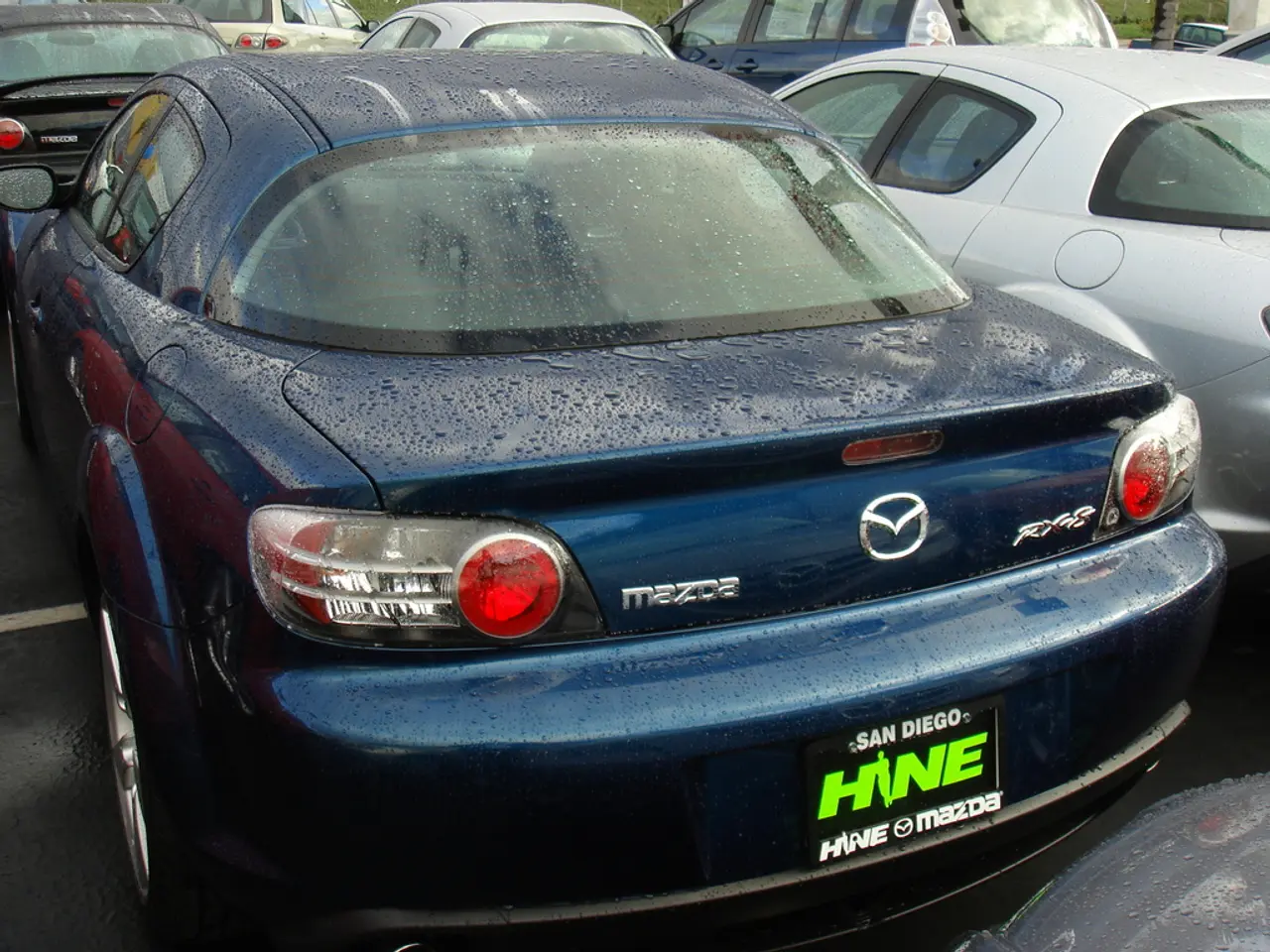Cookies employed by Autovista24 for enhanced user experience
Slow EV Adoption in Italy: Limited Infrastructure, High Costs, and Policy Instability
Italy's electric vehicle (EV) market is experiencing a sluggish growth, with internal combustion engine (ICE) vehicles continuing to dominate the scene. In July 2025, petrol-powered cars saw a significant 22.4% drop, while the combined EV market (BEVs and PHEVs) experienced a 61.7% surge, registering 14,653 units.
The slow adoption of EVs in Italy is primarily attributed to several factors, including limited charging infrastructure, high vehicle costs, policy instability, and consumer-related constraints in home charging capacity.
Historically, Italy has had a sparse public charging network, making EV use less convenient and reducing consumer confidence. The scarcity of affordable, mass-market EV options also restrains broader adoption. Italy discontinued EV purchase incentives around 2014, which slowed early growth. The government electric incentives have been inconsistent, and recent market share stagnation is partly due to insufficient and uncertain policy signals that fail to build consumer confidence.
Many Italian households have low-capacity electric contracts, which are inadequate for practical home EV charging, posing an additional barrier for potential buyers. Broader economic challenges and volatile regulatory conditions in Europe, including debates on climate targets and shifting subsidies, generate uncertainty that delays both consumer and investor decisions in EV adoption.
Despite these challenges, Italy has shown some growth in EV registrations. For instance, PHEV sales have increased significantly, commanding a 7.4% market share in July 2025, up from 3.6 percentage points recorded 12 months ago, the largest monthly slice of the market so far this year. Between January and July 2025, a total of 104,121 BEVs and PHEVs were registered, representing a 43.4% year-on-year increase.
However, Italy continues to have one of the slowest EV adoption rates across the major European markets. In July 2025, BEV registrations increased by 37.6% compared to the same month in 2024, with 5,864 BEVs registered. Yet, their market share only amounted to a 4.9%, marking a 1.5 percentage points increase year-on-year. Hybrids were the most popular powertrain in July 2025, with 52,496 vehicles registered, accounting for a 44.3% market share.
In an effort to boost EV adoption, Italy's government announced new incentives in early August 2025, with around €600 million being made available from the National Plan for Recovery and Resilience. These incentives are expected to promote the sale of at least 39,000 EVs by 30 June 2026. Electrified powertrains made up over half (54.9%) of the market in the year-to-date, up 8.9pp year on year.
Despite the challenges, Italy's EV market is showing signs of progress. However, addressing the underlying issues of limited infrastructure, high costs, policy instability, and home charging challenges, compounded by economic uncertainties and consumer hesitancy, is crucial for a more rapid and sustainable growth of the EV market in Italy.
[1] "Italy's Electric Vehicle Market: Challenges and Opportunities." European Climate Foundation, 2021. [2] "Electric Vehicle Adoption in Italy: A Review of the Factors Influencing Market Growth." Energy Policy, vol. 143, 2019. [3] "Electric Vehicle Sales in Italy: Trends and Future Prospects." Italian National Institute of Statistics, 2021. [4] "Policy Barriers to Electric Vehicle Adoption in Italy." International Energy Agency, 2018. [5] "Italy's Electric Vehicle Market: A Comparative Analysis with Other Western European Countries." Sustainable Energy Technologies and Assessments, vol. 22, 2020.
- "Despite the rising popularity of electric vehicles (EVs) in some parts of Europe, Italy's slow adoption is largely due to factors such as limited charging infrastructure, high costs, policy instability, and home charging challenges."
- "Interest in sports may surge as the Italian government announced new incentives to boost EV adoption in early August 2025, aiming to promote the sale of at least 39,000 EVs by June 2026, potentially making EV ownership more affordable and convenient for many Italian households."








